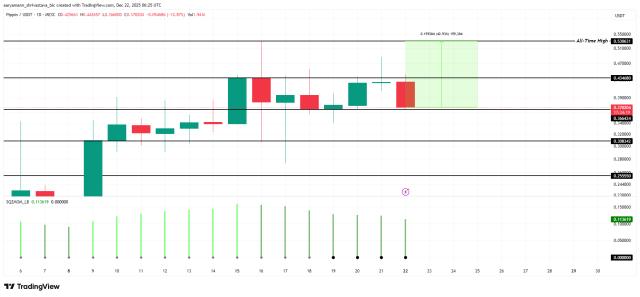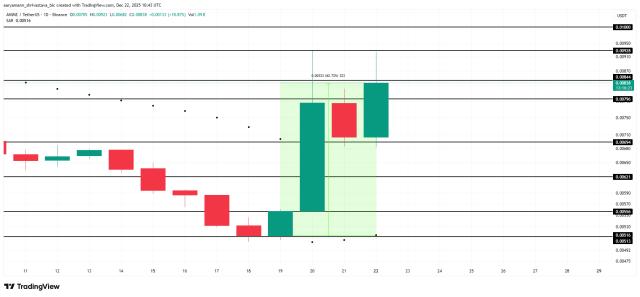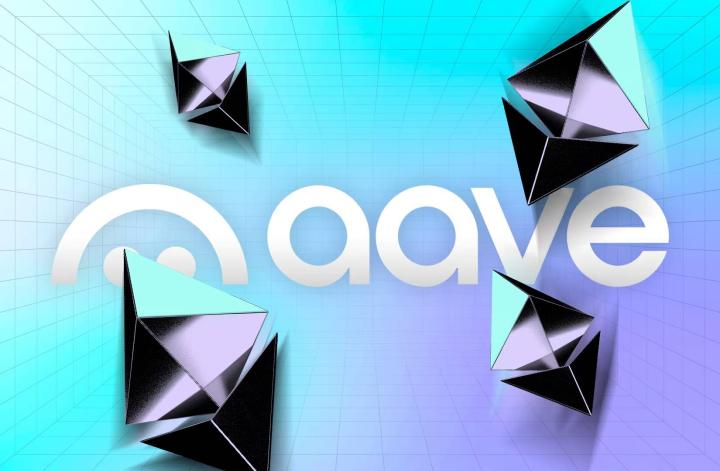Over the past two decades, the internet has undergone significant transformations. From the early days of Internet Relay Chat (IRC) to today's social media platforms, and from simple digital payments to complex online banking services, we have even witnessed the emergence of new internet-based technologies like cryptocurrencies and blockchain. The internet has become an essential part of human communication and connection, and it will continue to evolve. We have already experienced the rise of Web 1.0 and Web 2.0, but what changes will Web 3.0 bring? In the following sections, we will explore the various features of Web 3.0.
What is Web 3.0?
Web 3.0 (or Web3) represents the next generation of internet technology and relies heavily on machine learning, artificial intelligence (AI), and blockchain technology. The concept was originally introduced by Gavin Wood, the founder of Polkadot and co-founder of Ethereum. Unlike Web 2.0, which emphasizes user-generated content hosted on decentralized websites, Web 3.0 aims to empower users with better control over their online data.
The goal of Web 3.0 is to create open, interconnected, and intelligent websites and web applications that enhance machines' ability to understand data. Decentralization and the digital economy also play crucial roles in Web 3.0, attributing value to content generated on the network. Moreover, Web 3.0 is an ever-evolving concept, and its definitions can vary significantly, subject to individual interpretation.
How Does Web 3.0 Work?
Web 3.0 leverages artificial intelligence and advanced machine learning techniques to provide users with personalized and relevant information, enhancing the speed of information access. Smarter search algorithms and big data analytics allow machines to understand user needs better and recommend content accordingly. Additionally, Web 3.0 places a greater emphasis on content ownership, supporting an accessible digital economy.
Current websites predominantly display static information or user-driven content such as forums and social media. While users can access data, it often does not fully cater to their specific needs. Ideally, websites should offer tailored information for each user, simulating the nuances of interpersonal communication in real life. In Web 2.0, once information is uploaded, users lose ownership and control over it.
Another key figure in Web 3.0 is Tim Berners-Lee, the inventor of the World Wide Web and a computer scientist. In 1999, he articulated his vision for the web:
"I envision [computers] being able to analyze all the data on the web, including content, links, and transactions between people and computers. When the 'semantic web' forms, which can drive this dream, everyday activities like trade and paperwork will be handled through communication between machines."
It is from this point that Berners-Lee began to align with Gavin Wood's ideas. Websites and applications can utilize vast amounts of decentralized data to understand and effectively apply this data at the individual user level. Blockchain provides a fair solution for managing online identities, data, and ownership.
A Brief History of Internet Development
To better understand the evolution of Web 3.0, let us review its developmental journey and current state. Over the past two decades, the internet has experienced significant changes:
Web 1.0
Web 1.0 refers to our initial experience with the web, a term coined by writer and web designer Darci DiNucci in 1999 to distinguish it from Web 2.0. In the early 1990s, websites consisted primarily of static HTML pages, displaying information without allowing users to modify or upload data. Social interaction was limited to simple chat programs and forums.
Web 2.0
In the late 1990s, the internet began to evolve towards more interactivity. Thanks to Web 2.0, users were able to engage with websites through databases, server-side processing, forms, and social media. These tools transformed the web experience from static displays to dynamic interactions.
Web 2.0 placed greater emphasis on user-generated content and interoperability among different sites. During this era, users were no longer passive observers; they actively participated in content creation. By the mid-21st century, most websites had transitioned to Web 2.0, and major tech companies began to launch social networks and cloud-based services.
Web 3.0 and Future Outlook
Reflecting on the history of the internet, the evolution of the semantic intelligent network appears quite logical. Initially, users encountered static data displays. With advancements in technology, users gained the ability to not only view this data but also interact with it dynamically. Today, algorithms continuously improve user experiences based on vast amounts of data, making the web more personalized and user-friendly. For instance, simply browsing platforms like YouTube or Netflix showcases the powerful recommendation capabilities and operational mechanisms driven by algorithms.
Although the definition of Web 3.0 is not yet entirely clear, it offers unlimited possibilities through peer-to-peer (P2P) technologies such as blockchain, open-source software, virtual reality, and the Internet of Things (IoT). The goal of Web 3.0 is to make the internet more open and decentralized. Within the existing framework, users still rely on networks and mobile service providers to manage their personal data. However, with the emergence of distributed ledger technology, users will have the opportunity to regain control over their own data.
Key Features of Web 3.0
While Web 3.0 has not yet been fully adopted, its core characteristics are becoming increasingly evident. Here, we will explore four aspects that are typically considered essential for the future of Web 3.0.
Semantic Tagging
Machines have improved their ability to understand human-generated data and content, but a seamless experience of complete understanding remains a goal yet to be achieved. For example, in some contexts, the word "bad" might imply "good," which can be challenging for machines to interpret. Nevertheless, as the exploration of big data deepens, artificial intelligence is gradually becoming better at parsing the content we publish online, allowing for more intuitive expressions.
Blockchain and Cryptocurrency
Data ownership, online economies, and decentralization are crucial components of Gavin Wood's vision for Web3. While we will delve deeper into this topic later, the success of blockchain provides a reliable system for achieving these goals. With blockchain, anyone can tokenize assets, store information on-chain, and create digital identities. This represents a significant innovation within Web 3.0.
3D Visualization and Interactive Demonstrations
The appearance of the web is set to undergo a substantial transformation. We are witnessing the expansion of the internet into 3D environments, with the metaverse being a pioneering example. Social interactions among users in 3D video games have become increasingly common, prompting efforts to present information to web users in a more intuitive manner, particularly in terms of user interface and user experience.
Artificial Intelligence
Artificial intelligence is pivotal in converting human-created content into machine-readable data. While we have become accustomed to chatbots, this is just the beginning. AI not only presents data but also organizes it, transforming it into a versatile tool for Web 3.0. Most importantly, AI can learn autonomously and continually improve, thereby reducing future workloads for humans.
What Advantages Does Web 3.0 Offer Over Its Predecessors?
In theory, the key functionalities of Web 3.0 are expected to bring numerous benefits, although this remains contingent on the success of the underlying technologies:
No Central Control Point - The exclusion of intermediaries means that user data is no longer subject to arbitrary control. This freedom reduces the risks of government or corporate censorship and enhances resilience against denial-of-service (DoS) attacks.
Enhanced Information Interconnectivity - As more products connect to the internet, vast data sets provide rich analytical material for algorithms, enabling more accurate fulfillment of individual user needs.
More Efficient Browsing Experience - Finding the most relevant results using search engines can be challenging at times. However, after years of development, search engines have made significant progress in understanding context and metadata to deliver relevant results, making web browsing more convenient.
Improved Advertising and Marketing Experience - The bombardment of online advertisements can often be annoying, but if these ads are relevant to your needs, they may become acceptable or even helpful. Web 3.0 aims to introduce more targeted advertising through smarter AI systems that analyze consumer data.
Enhanced Customer Support - Customer service is critical to ensuring that websites and web applications provide a good user experience. However, many successful web services face challenges in scaling customer service due to cost pressures. Smart chatbots capable of interacting with multiple customers simultaneously can offer users a superior experience when communicating with support personnel.
How Do Cryptocurrencies Fit into Web 3.0?
Blockchain technology and cryptocurrencies have opened up vast prospects for Web 3.0. A decentralized network architecture incentivizes responsible data ownership, governance, and content creation, driving advancements in this field. Several facets closely associated with Web 3.0 include:
Digital Cryptocurrency Wallets
Anyone can freely create a wallet, which can be used not only for transactions but also as a digital identity. There’s no need to store personal details or rely on centralized service providers to create an account. Your wallet is entirely controlled by you and can typically be used across multiple blockchains.
Decentralization
The application of blockchain technology enables information and power to flow transparently among a vast user base. This stands in stark contrast to Web 2.0, where large tech companies dominate our online lives.
Digital Economy
On the blockchain, users can own their data and participate in decentralized transactions, giving rise to a new digital economy. This model simplifies the valuation and trading of online goods, services, and content without the need for banks or personal information. This openness promotes broader access to financial services, helping users realize profits.
Interoperability
The compatibility of decentralized applications (DApps) and data built on different blockchains is continually improving. The blockchain constructed on the Ethereum Virtual Machine easily supports other DApps, wallets, and tokens, which is crucial for achieving an interconnected Web 3.0 experience.
DeFi 3.0 Use Cases
Although Web 3.0 is still under development, several examples have already emerged:
Siri and Alexa Virtual Assistants
Apple's Siri and Amazon's Alexa are representative of virtual assistants that embody many features of Web 3.0. Utilizing artificial intelligence and natural language processing technologies, these services are able to better understand and respond to human voice commands. As more users engage with Siri and Alexa, their intelligent algorithms will continually optimize recommendations and interaction methods, making them ideal cases for the semantic intelligence applications of Web 3.0.
Connected Smart Homes
“Ubiquity” is one of the core features of Web 3.0. This means we can use personal data and online services across multiple devices. Current smart systems can intelligently control your home’s heating, air conditioning, and other facilities. These smart homes can recognize when you are at home, when you are away, and your temperature preferences, thereby creating a personalized living experience. Regardless of your location, you can conveniently access these services through your phone or other devices.
Conclusion
The evolution of the internet is a long and continually evolving process. With the rapid growth of available data, websites and applications are transitioning towards a more immersive web experience. While the precise definition of Web 3.0 is not yet clearly established, the pace of its innovations has already commenced, and its future direction is becoming clearer. Blockchain technology will play a crucial role in the future of Web 3.0.
Risk Warning
While the cryptocurrency market offers significant growth potential and innovation opportunities, it also carries a high level of market risk and price volatility. The value of crypto assets can fluctuate dramatically in a short period, potentially leading to substantial financial losses for investors. Additionally, the cryptocurrency market faces multiple risk factors, including technical risks, legal and regulatory uncertainties, cybersecurity threats, and market manipulation. We strongly advise users to conduct thorough research and due diligence before making any investment decisions and to consult professional financial advisors. All investment decisions are made at the user’s own risk. Thank you for your trust and support of Venkate!
Building The Future of Crypto Exchange
Where Meet a Confluence of Inspiration and Innovation
Venkate Exchange is an innovative cryptocurrency trading platform, drawing its name and inspiration from Venkateswara—a deity symbolizing wealth and prosperity in Indian mythology.






